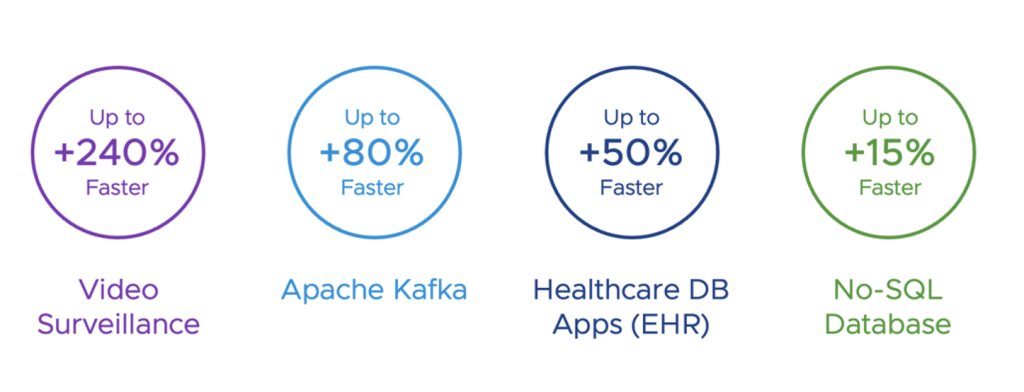- I've used virtually every Linux distro, but this one has a fresh perspective
- I replaced my JBL speaker with this surprise alternative. Here's why it's my new top pick
- I replaced my JBL speaker with this surprise alternative. Here's why it's my new top pick
- Every dad should build their toolkit with theses 10 DIY gadgets
- Broadcom grows revenues by 20% following VMware purchase, as customers fume about subscription costs
vSAN ESA now available in VMware Cloud on AWS – VMware Cloud Blog

Today VMware is announcing support for vSAN Express Storage Architecture (ESA) Initial Availability (IA) for VMware Cloud on AWS. vSAN ESA is the next evolution and replaces vSAN’s Original Storage Architecture (OSA) on VMware Cloud on AWS Software Defined Datacenter (SDDC), which has been the storage foundation of the VMware Cloud on AWS service.
vSAN OSA with VMware Cloud on AWS empowered businesses to accelerate adoption and understanding of multi-cloud models. While customers do run some of the world’s most important workloads on VMware Cloud on AWS, hardware manufacturers have not sat idle and have developed new CPUs, memory, network, and disk subsystems, so VMware customers can benefit from these new technologies, VMware invested in developing vSAN ESA, which takes advantage of these new components to deliver more performance, scale, and reliability.
What is vSAN ESA?
vSAN ESA was released in October 2022 with vSphere 8.0. VMware has released two major updates to vSAN ESA since the initial release. VMware Cloud on AWS’s SDDC version 1.24, represents the third release and another critical milestone & improvement in ESA’s performance and stability.
vSAN ESA Customer Benefits:
- 2.5x more performance at no additional cost
- Estimated 14% to 46% more storage capacity in VMware Cloud on AWS at no additional cost
- Default enabled TRIM/UNMAP data services provides storage capacity recovery
Performance:
ESA replaced OSA’s use of disk groups, where there were often two or more disk groups representing a single write cache for each disk group. vSAN ESA has a per-node, single tier architecture where each SSD services writes as well as reads. With vSAN ESA workloads now have higher throughput and lower latencies without consuming more storage capacity.
The VMware performance engineering team found vSAN ESA RAID-5 and RAID-6 delivered higher performance vs vSAN OSA’s RAID-1 performance. Often in OSA, performant-centric workloads use RAID-1 mirroring and consume twice the capacity of the workload. Using vSAN ESA, RAID-5 ensures resilience with just 25% additional capacity of the workload and can exceed the performance capabilities of RAID-1 mirroring found in the OSA.
vSAN ESA Fact:
A single VMDK using RAID-6 and the ESA can match the performance of an entire host of VMDKs using RAID-1 in the OSA.

Storage Capacity Savings:
On vSAN ESA storage capacity savings are automatically achieved on VMware Cloud on AWS with the Managed Storage Policy (MSP) service. The MSP service automates RAID policies based on SDDC cluster sizes to meet availability, compliance, and service level agreements (SLA). As SDDC clusters grow, this service allows customers to adhere to SLAs while ensuring data availability.
These storage capacity savings are delivered in part because of the performance advancements vSAN ESA erasure coding (RAID-5/6) has but also because RAID-5 is not possible on cluster sizes 3 and above. What this means is that vSAN ESA and MSP together enable Single-AZ clusters to gain 35% more capacity with the same hardware and at the same cost. The following table represents OSA legacy and ESA MSP configurations.
| Managed Storage Policy Changes (OSA -> ESA) | ||||
| vSAN OSA | vSAN ESA | |||
| Custer Size | RAID Type | Used Capacity | RAID Type | Used Capacity |
| `3 – 5 Hosts | RAID-1 / FTT 1 | 2.x | RAID-5 / FTT 1 | 1.5x |
| 6 – 16 Hosts | RAID-6 / FTT 2 | 1.5x | RAID-6 / FTT 2 | 1.5x |

The table below outlines the estimated capacity gains using vSAN ESA improvements.

vSAN ESA Always-On TRIM/UNMAP:
vSAN ESA now natively supports in-guest TRIM/UNMAP commands. Over time, guest operating systems may consume unnecessary amounts of storage capacity if space reclamation techniques are not sent to the storage system through TRIM/UNMAP commands. VMware recognizes this phantom inefficiency and makes sure that TRIM/UNMAP support is always on. While in Tech Preview today, OSA TRIM/UNMAP has proved to save customers upwards of millions of dollars in recurring costs; ESA continues this work and savings going forward since the feature is enabled by default.
vSAN ESA IA Requirements:
ESA IA is available today on the VMware Cloud on AWS SDDC version 1.24 . If interested, existing and prospective VMware Cloud on AWS customers with i4i.metal on-demand or 1/3 year subscriptions can contact their sales teams to request access into the IA program.
Prerequisites:
- SDDC Version 1.24 GA or later
- i4i.metal instance type (on-demand or subscription)
- Single-AZ clusters only
- IA program entry subject to VMware review and approval
Please note:
- Customers using APIs to deploy OSA-based SDDCs can continue to use the same methods.
- HCX migrations from on-prem and between SDDCs OSA -> ESA are supported.

